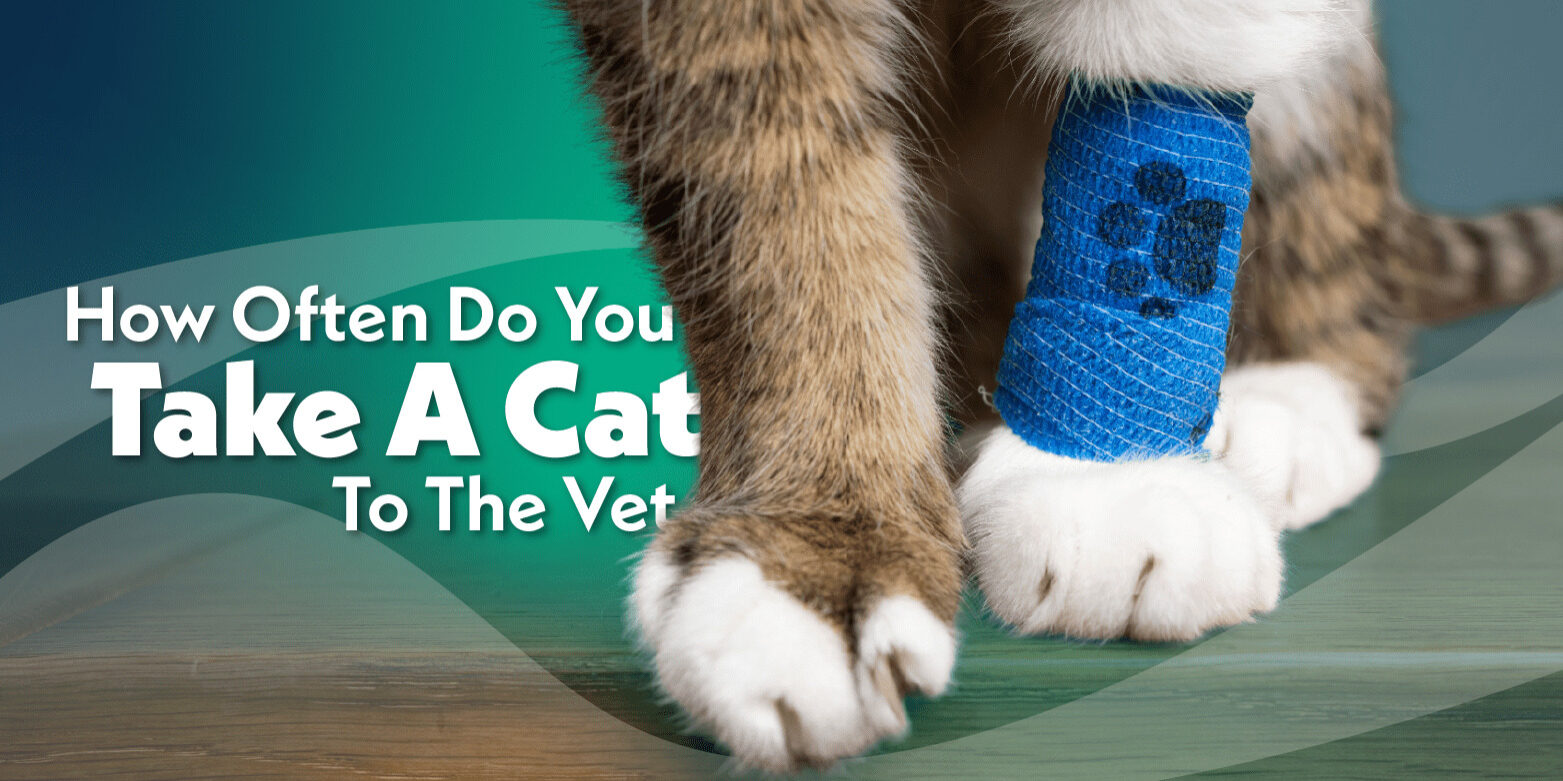How Often Do You Take a Cat to The Vet?

When you are hanging out with other pet parents, a common question that comes up is “How often do you take a cat to the vet?” The reality is there is an answer to this question that doesn’t vary from cat to cat. It is a common misconception that cats do not require as many vet visits as other pets like dogs. This is not true as cats are not self-sufficient; they need to be taken to the vet occasionally.
That said, taking your cat to the veterinarian is not exactly a walk in the park. It can be a stressful experience for the sweet feline and you as a pet parent. Maintaining regular vet visits can help keep your cat in their routine.
How Often Should You Take a Cat to the Vet?
The number of times you take your cat to the vet will vary depending on your cat’s health and age. We will outline the general guidelines on how often you need to take a cat to the vet during the different stages of their lives.
Young Kittens
From birth to one year, kittens often need to go to more doctor visits than at any other period. For the first six-16 weeks of their lives, kittens need to go to the vet monthly. A first vet visit is essential to get expert advice on future pet care plans. This is where you are going to learn about your pet’s medical conditions and when you will get your pet spayed or neutered. You can also get your cat’s vaccinations.
The doctor will do a complete head-to-tail physical examination during each visit. This is to check for any underlying health issues or abnormalities. Additionally, you can get the vet’s advice on minimizing destructive behavior, especially for first-time cat owners.
At eight to 12 weeks, you need to take your kitten for the feline leukemia vaccine. Exposure to this virus can be life-threatening to your kitten. From six-12 months, you can start discussing spaying and neutering your kitten.
Adult Cats
Older cats should be taken to the vet at least two times per year every six months. The vet will do comprehensive physical exams, i.e., dental cleanings, update their vaccinations, and check for parasites. If you have an outdoor cat, they are likely to have an increased risk for parasites. Stool examinations are therefore necessary. Even indoor cats still require rabies vaccines and distemper.
The vet will also recommend other vaccines based on your cat’s lifestyle. Healthy adult cats can make do with annual vet visits alone. They also need oral health examinations to check for tartar, plaque, crown, and gingivitis. You need to ensure your cat’s teeth and gums are healthy.
It is also important for your adult cat to have annual wellness bloodwork done. This helps to provide enough information on the well-being of the cat. Additionally, it helps detect the early onset of diseases giving the vet time to address them before they become serious.
Senior Cats

An older cat needs to undergo a CBCChemistry, Thyroid blood work and urinalysis annually. Regardless of how healthy your cat looks, this examination is key to the longevity of your cat’s life.
With a senior cat, observing your pet’s behavior and movement and discussing them with your vet is crucial. Watch how they walk, rise from a nap, use a litter box and even jump. If they show any sign of stiffness or reluctance, this may be a cause of concern. To an untrained eye, these changes may not mean much, so you need to discuss them with your vet.
When to Take the Cat to the Vet Immediately
The hard and fast rule regarding pet care is that it is better to be safe than sorry. Preventive care is better than reactive care. If something does not feel right with your cat, take it to the vet’s office. No matter the cat’s age, report any behavior and body changes to your veterinarian.
Do not wait until your regular or annual checkups to report urgent symptoms in your cat. Here are some of the signs that require immediate veterinary care;
- Changes in appetite
- Changes in stool or urine
- Depression
- Limping or awkward movements
- Bleeding
- Dietary indiscretion
- Increased water intake
- Vomiting
- Avoiding contact with people
- Weight loss
When you notice one of these things, it is time to take a car ride to the vet.
General Tips
Cats need lot of attention and care, so you should always have an annual checkup for your cat. When you see the vet annually, the veterinarian is going to be able to record your cat’s health, and see what is getting better, and what is getting worse.
You should also note the differences with having an indoor cat versus and outdoor cat. Outdoor kitties or more susceptible to common diseases, so you need to take your cat to see a veterinarian if you notice any issues such as limping or vomiting.
It is important to have your cat form a relationship with your veterinarian by having them be the only one your cat sees. A lot of kitties do not do well with humans, so giving them regular contact with humans such as your veterinarian can help this.
For bigger issues, you should be prepared to take your cat for a second round visit. You need to make going to the vet a part of your schedule as well as your cat’s schedule.
Finally, make sure when you go out of town you leave your veterinarian’s contact information.
Wrap up
Kitty care should be a great concern to all pet owners. Your pet’s health and well-being are solely your responsibility. Taking your pet to the vet is something you should make a routine. Do not limit their vet visits only to times of illness or emergencies, especially for ESAs.
Another thing is that you need to talk to your vet if you are expecting any significant move or change in your lifestyle. Kitties also need to prepare for the changes. If they are going to be exposed to more outdoors, they will need vaccine boosters. If your cat suffers from anxiety, you will need to learn how to manage their stress.
Get your Official ESA Letter Consultation from a licensed therapist.
Get ESA Letter Now
Dogs, Emotional Support Animal
Service Dog Registration: Everything You...
Jonalyn Dionio
Dec 12 2025

Emotional Support Animal, Dogs, Housing
How to Get an ESA Letter for Housing? Ge...
Andre Gregatti
Dec 2 2025




